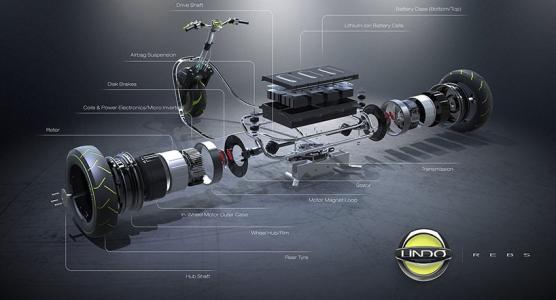How to Bring Lithium Batteries Back to Life
Nov 11, 2019 Pageview:4066
Being rechargeable batteries with high energy capacities, lithium-ion cells have the potential of being brought back to life in cases of failures or death. It’s a ‘supernatural’ way of ensuring you get the most out of your battery pack without having to dispose of it too fast.
Can you revive a dead lithium-ion battery?
The answer is a definite YES. It is possible to revive a dead lithium-ion battery for you to exhaust its potential before its is ready for disposal entirely. Being rechargeable puts it an extra advantage above its single-use disposable predecessors, which would drain the user economically.
How do you revive a lithium battery?
Lithium-ion batteries are a rechargeable type of battery technology that makes excellent power sources for electronic devices of this era. The cells power electrical creations from simple and common electrical gadgets such as remote controllers, smartphones and camcorders, to high-end inventions like the electric vehicle. These high-energy densities supplied by these battery packs are the desired quality that has been used to sustain the evolutionary need for battery power for decades. The significant advantages that lithium-ion batteries have over other battery technologies are its high capacity, more charge cycles, and low self-discharge rates that prolong its lifespan.
Before you settle for disposing of your lithium-ion battery pack that may appear to be dead, it is recommended that you try bringing it back to life. Just like Frankenstein’s monster, you’d be surprised at the possibilities that electricity can achieve. You might just be throwing away a battery capable of supplying extra power when revived and here are the steps you need to take for the process:
1.Check the voltage reading
Remove the battery pack from your electrical device and take a voltage reading using your voltmeter. Some lithium batteries may fall into sleep mode due to a very low voltage after being drained too much. It is therefore advisable that you try to revive it instead of throwing away a perfectly good cell. If your lithium battery is rated 3.7 volts, for example, and the voltmeter reading shows only 1.6, then it may be in the infamous sleep mode.
2.Connect the battery to an appropriate charger or a NiMH charger for boosting
Specific battery chargers and analyzers of the new age come with special inbuilt features already installed. These features may include a “recovery” or “boost” option designed to revive a sleeping or dead battery. However, using such chargers on dead cells may turn out to be unsuccessful at times mainly when used on cells with very low voltages. Using a NiMH battery charger can help boost your dead battery to the required voltage for you to start charging using the standard lithium charger.
3.Monitor the battery’s progress in intervals
As the battery charges, one should be close by to monitor the progress in intervals of 5 minutes each. With every interval, take the voltage reading and note down until the desired voltage is achieved. If your battery is rated 3.7 volts, for example, and you’re trying to revive it, once it reaches 1.5 volts, you should disconnect it from the NiMH charger. Note that this should be the voltage acquired by each cell in the entire pack.
4.Charge and discharge the battery
After disconnecting the pack from the NiMH charger, return into the lithium charger and charge it to full capacity. This may take some time, depending on the time of lithium battery being used and the capacity of the cell you are reviving. Modern chargers with the special inbuilt features automatically switch from recovery mode to charging hence no need to take out the battery after boosting. Once the pack is fully charged, fix it into the required device and discharge it while taking extra caution not to drain it completely.
5.Charge the battery one last time
Once the battery is discharged, use the regular lithium charger to charge it slowly to full capacity one last time before reusing. This move acts as a way of getting the battery back on track with its charge and discharge cycles.
Caution
The liquid electrolyte inside any lithium-ion battery is highly flammable, and anything can go wrong during the process. Accidents are unpredictable, but one can always be prepared for them. Be sure to wear safety glasses or gloves when reviving a dead battery to be safe. Such procedures should always be carried out carefully and under close supervision in case of help may be required.
The success rate for such a process is not always 100%. Therefore, one should be prepared in case the battery fails to jump back to life.
How to prevent a lithium battery from dying
Just like every other thing that comes to an end, life, to be precise, lithium batteries are expected to creep towards uselessness over time slowly. Battery death is inevitable at some point in time; however, one can prevent them from dying earlier than they were intended to by doing the following:
1.Keep your battery away from extreme temperatures
Excessive heat can tamper with a battery’s lifespan. It causes the battery fluid to dry up quickly, thus damaging the internal battery structure in the end. This leads to faster degradation of lithium-ion cells and, ultimately, their untimely deaths. Keep your battery cool enough or, more preferably, at room temperature.
2.Keep the battery clean
A typical cell is prone to power-draining grime accumulating and thus leading to its decline. Users are advised to clean the battery terminals for better performance.
3.Use the battery more
The more you stay without using the battery, the more power-draining grime accumulates on it. Using your battery regularly makes it a better performer and prevents it from drying quickly.
4.Get the right battery charger
The right battery charger is a necessity for your battery pack to stay healthy. However, fast charging the cells could cause them to deteriorate quicker than charging them slowly.
Final thoughts
It is difficult to tell how long a lithium-ion battery will serve its purpose. It all depends on the battery’s usage accompanied by other motivating factors that may catalyze its death. Battery death begins the second they leave the manufacturing factory and is an irreversible and unavoidable occurrence. The concept of battery death is a sure thing engraved in the mind of any battery user whether or not they may be conscious of it.
- Prev Article: First Charge Of Lithium-Ion Battery
- Next Article: How To Build A LiPo Battery Pack
Leave Message
Hottest Categories
-
Hottest Industry News
-
Latest Industry News











